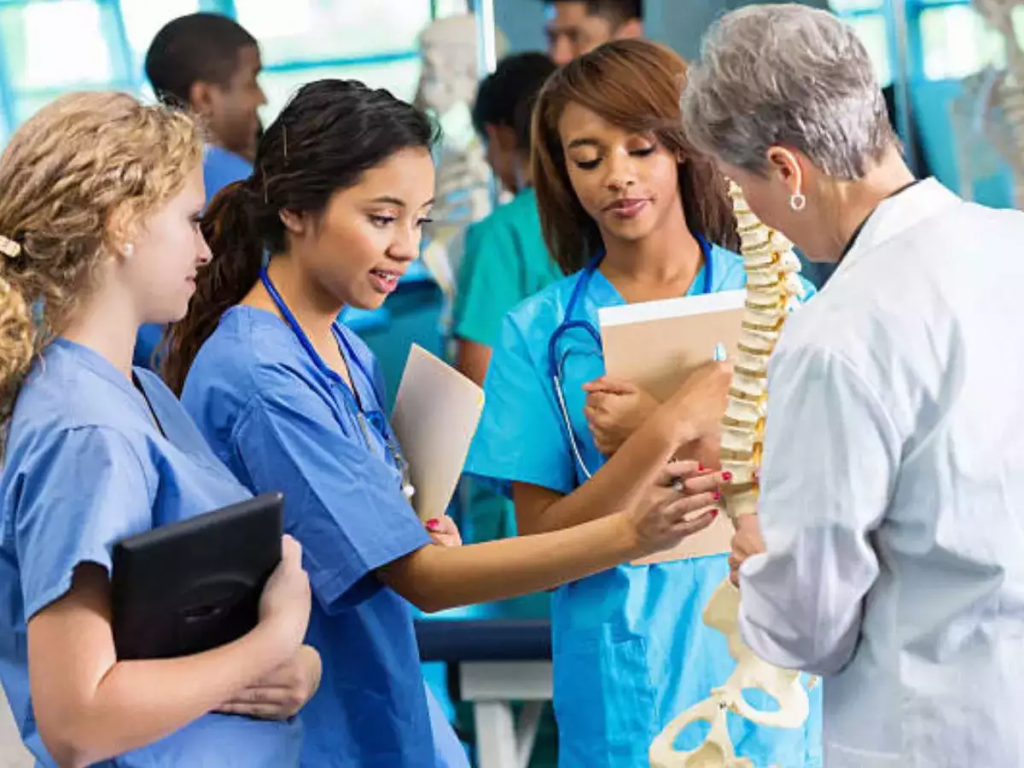Medical education has undergone a transformative shift in recent years, driven by rapid technological advancements. The integration of digital tools, artificial intelligence, and immersive learning environments has redefined how medical knowledge is imparted and absorbed. These innovations not only enhance learning outcomes but also prepare future healthcare professionals to adapt to an ever-evolving medical landscape.
The Shift Toward Technology-Driven Medical Education

1. Transition from Traditional to Digital Learning
Traditional medical education relied heavily on textbooks, lectures, and clinical rotations. While these methods provided foundational knowledge, they often lacked real-time feedback, adaptability, and hands-on experience. The integration of technology has revolutionized this approach by offering interactive and personalized learning experiences.
2. Increasing Demand for Adaptive Learning
With the rapid expansion of medical knowledge, there is a growing need for adaptive learning methods that tailor educational content to individual learning styles and knowledge gaps. Technology bridges this gap, allowing for continuous learning and skill development.
Key Innovations in Medical Education
1. Simulation-Based Learning
a. High-Fidelity Manikins and Simulators
High-fidelity simulation models replicate real-life clinical scenarios, enabling medical students to practice procedural skills, emergency responses, and diagnostic reasoning in a risk-free environment. Simulators mimic physiological responses, allowing learners to refine their decision-making abilities.
b. Virtual Patient Encounters
Virtual patients, powered by AI, engage students in diagnostic interviews and clinical decision-making exercises. These interactive simulations develop critical thinking and diagnostic reasoning skills in a realistic but controlled environment.
2. Virtual Reality (VR) and Augmented Reality (AR)
a. Immersive Anatomy Education
VR and AR technologies allow students to explore human anatomy in 3D, providing a deeper understanding of complex structures and relationships. Interactive models enhance spatial awareness and improve retention of anatomical knowledge.
b. Surgical Training and Procedural Simulation
Surgeons-in-training use VR to practice intricate procedures in a virtual environment before performing them on actual patients. This reduces errors, enhances precision, and boosts confidence in real-life settings.
3. Artificial Intelligence and Machine Learning
a. Personalized Learning Pathways
AI-powered platforms analyze individual learning patterns and customize educational content accordingly. These adaptive learning platforms ensure that students focus on their weaknesses, enhancing comprehension and retention.
b. Clinical Decision Support Systems (CDSS)
AI-driven decision support systems help students develop clinical reasoning by offering evidence-based recommendations during simulated patient encounters. This exposure prepares them for real-world diagnostic challenges.
4. Gamification of Medical Education
a. Interactive Learning Through Gamified Modules
Gamification introduces elements of competition, rewards, and challenges into medical education. Platforms offering quizzes, case-based challenges, and simulated decision-making scenarios engage learners and promote active participation.
b. Serious Games for Skill Development
Serious games, designed specifically for medical training, immerse students in clinical scenarios where they can practice problem-solving, teamwork, and leadership skills.
5. Telemedicine and Remote Learning Platforms
a. Real-Time Virtual Case Discussions
Telemedicine platforms facilitate remote clinical learning by enabling students to observe and participate in virtual patient consultations. These experiences expose learners to diverse cases and diagnostic approaches.
b. Online Medical Conferences and Webinars
Remote learning platforms allow students to engage with global experts, attend virtual conferences, and participate in collaborative research discussions, expanding their knowledge beyond geographical boundaries.
6. E-Learning Platforms and Massive Open Online Courses (MOOCs)
a. Accessible Medical Education
E-learning platforms like Coursera, Khan Academy, and EdX offer MOOCs that provide high-quality medical content accessible to learners worldwide. These platforms facilitate self-paced learning and ongoing skill development.
b. Supplementing Traditional Curriculum
MOOCs complement traditional medical curricula by offering additional resources and specialized courses that address niche medical topics and emerging healthcare trends.
The Role of Big Data and Analytics in Medical Education

1. Data-Driven Curriculum Design
Big data analytics identify gaps in medical education by analyzing student performance, clinical outcomes, and feedback. Institutions leverage these insights to refine curricula and improve teaching methodologies.
2. Predictive Learning Analytics
Predictive analytics assess student performance and predict potential challenges. Educators use this data to offer timely interventions and personalized learning pathways.
Benefits of Embracing Technology in Medical Education
1. Improved Retention and Understanding
Interactive simulations, 3D models, and gamified content enhance student engagement and improve retention of complex medical concepts.
2. Enhanced Clinical Decision-Making Skills
AI-driven platforms and virtual patient encounters provide real-world decision-making practice, preparing students for clinical challenges.
3. Increased Accessibility and Flexibility
Online platforms and remote learning technologies make quality medical education accessible to a global audience, fostering inclusivity and diversity.
4. Reduced Errors and Enhanced Patient Safety
Simulation-based training reduces medical errors by allowing students to practice procedures repeatedly in a safe environment.
Challenges and Considerations in Technology-Driven Medical Education
1. Cost and Infrastructure
Implementing advanced technologies requires significant financial investment and infrastructure development, which may be a barrier for resource-limited institutions.
2. Digital Literacy and Training
Ensuring that educators and students are proficient in using digital tools is essential for maximizing the benefits of technology-driven education.
3. Ethical and Privacy Concerns
Data privacy and ethical considerations surrounding AI and patient simulations must be addressed to protect patient information and maintain trust.
The Future of Medical Education: Emerging Trends

1. Integration of AI in Personalized Learning
AI will continue to refine personalized learning by offering real-time feedback, tailoring content, and adapting to individual learning needs.
2. Expansion of VR and AR Applications
Advancements in VR and AR will enhance surgical training, emergency response simulations, and anatomy education, further bridging the gap between theory and practice.
3. Remote and Hybrid Learning Models
Hybrid learning models combining online modules with in-person clinical training will become the norm, offering flexibility while maintaining hands-on learning experiences.
Also Read: Understanding How To Get Dental Implants Covered By Medical Insurance
Conclusion
Innovations in medical education have ushered in a new era of learning that blends technology with traditional methodologies. From VR and AI-powered simulations to gamified modules and remote learning platforms, these advancements enhance clinical reasoning, improve retention, and prepare future healthcare professionals for the complexities of modern medicine. As technology continues to evolve, the future of medical education promises even greater personalization, accessibility, and efficiency in training the next generation of healthcare providers.
FAQs on Innovations in Medical Education
1. How does virtual reality benefit medical education?
VR allows students to explore complex anatomical structures and practice surgical procedures in a simulated environment, enhancing spatial awareness and skill development.
2. What role does artificial intelligence play in personalized learning?
AI analyzes learning patterns and customizes educational content to focus on individual weaknesses, optimizing knowledge retention and comprehension.
3. How do simulation-based models improve clinical decision-making?
Simulations replicate real-life scenarios, allowing students to practice decision-making, diagnostic reasoning, and emergency responses without risk.
4. Are MOOCs a viable option for medical education?
Yes, MOOCs provide accessible, high-quality content that complements traditional curricula and offers specialized knowledge on emerging healthcare trends.
5. What challenges do institutions face when integrating technology into medical education?
Institutions may encounter challenges related to cost, infrastructure development, digital literacy, and data privacy when implementing technology-driven education.




